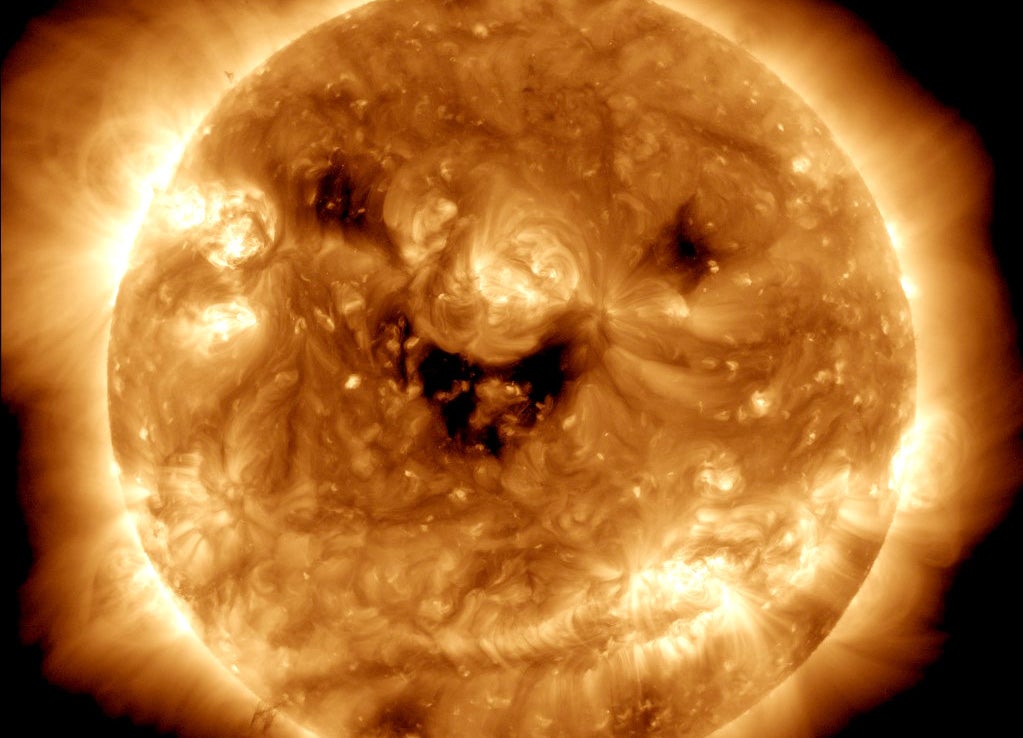Nasa posts picture of scary ‘smile’ in the Sun as Halloween could bring solar storms

Your support helps us to tell the story
From reproductive rights to climate change to Big Tech, The Independent is on the ground when the story is developing. Whether it's investigating the financials of Elon Musk's pro-Trump PAC or producing our latest documentary, 'The A Word', which shines a light on the American women fighting for reproductive rights, we know how important it is to parse out the facts from the messaging.
At such a critical moment in US history, we need reporters on the ground. Your donation allows us to keep sending journalists to speak to both sides of the story.
The Independent is trusted by Americans across the entire political spectrum. And unlike many other quality news outlets, we choose not to lock Americans out of our reporting and analysis with paywalls. We believe quality journalism should be available to everyone, paid for by those who can afford it.
Your support makes all the difference.Nasa has shared an image of a scary-looking “smile” in the Sun, ahead of a Halloween that could bring solar storms.
The smile is not as friendly as it appears: the dark patches that make up the figure are coronal holes that allow solar wind to escape from the Sun. That wind could trigger a solar storm on Earth, forecasts suggest, though it is expected to be relatively minor.
The dark patches are really cooler areas, which look that way because of the technology used to capture the Sun’s surface. But social media uses quickly noted that they were fitting given the approach of Halloween, when Nasa shared the image on social media.
The two coronal holes could help enhance the solar wind, according to the Met Office. It suggested that “slightly elevated or elevated winds” could last until the day of Halloween.
That unsettled or active activity on the Sun could lead to a minor geomagnetic storm, it forecasted.
The extra activity also led the US National Oceanic and Atmospheric Administration to start a geomagnetic storm watch. That period will last until 2 November.
Solar storms are a major cause of concern for experts who fear that activity on the Sun could cause to significant problems on Earth. Extreme solar storms could knock out power systems, disrupt spacecraft and the navigation systems that rely on them, and take down radio communications.
But experts only predicted that the upcoming activity would lead to a minor solar storm. In such a storm, there can be weak fluctuations in the power grid, small impacts on satellites and aurora could be visible.
Join our commenting forum
Join thought-provoking conversations, follow other Independent readers and see their replies
Comments